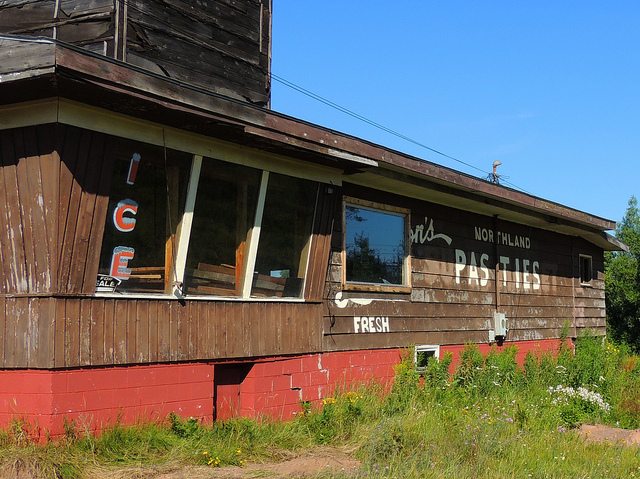For U.P. residents, some health data to provoke chest pains
If you want to be shocked, or at least provoked, look up the Center for Disease Control and Prevention statistics for acute myocardial infarction (AMI, commonly known as heart attack) for the U.P.
The AMI rates for the entire western U.P. and eastern U.P. (Schoolcraft and Chippewa) for 2008-2010 were at the highest level for the top five categories the CDC tracks. Schoolcraft, in particular, had the highest number of heart attack deaths per 100,000 population for the entire state. For coronary heart disease, the counties of the western U.P. are in the worst category for coronary heart disease mortality with Gogebic fourth in the state.
My initial response was disappointment with regional health care. Hospitals seemed to blame, or at least Yoopers’ distance from them in the large, sparsely populated region.
Then I spoke with a paramedic who explained that critical risk factors for heart attack include obesity, smoking, poor eating habits, geographical access-to-care issues, and climates that encourage inactive lifestyles. That combination, common in the U.P., is killing its residents.
But the cure isn’t in old health care formulas. Dr. Teresa Frankovich, the Western Upper Peninsula Health Department medical director, covering the region from the Western U.P. to Marquette County, explains, "Historically, healthcare has focused on diagnosis and treatment of disease. There is now a growing understanding that a focus on prevention is cost-effective and key to changing the health status of our population. Preventing obesity, for example, would have a profound impact on the burden of diabetes, heart disease and cancer.”
So if the answer is in prevention, we’ve just shifted the focus from hospital settings to U.P. homes. The burden doesn’t fall on the hospital, but rather the patient.
That gave me a whole new perspective on the problem. Inadequate health care, poor EMS response times, medical mistakes and apathy – definite issues that could be problematic – seemed secondary.
Frankovich is skeptical of the statistics though, and believes higher U.P. death rates are “the effect of an aged population.”
But she does agree that issues need to be addressed in U.P. heart disease prevention. This means community-cooperative organization. Frankovich recommends multiple options that work in tandem for effective results. Grants for community improvement such as gardens, hiking and bike trails, and parks help increase physical activity.
Frankovich points out that Michigan is among the nation’s fattest states. Only Mississippi, Louisiana, West Virginia and Alabama are worse. Colorado, the state with the lowest obesity rate, is known for its health-conscious cities. The U.P. needs to follow Colorado’s example of emphasizing exercise, smoking prevention, reducing alcohol consumption and healthier eating.
“How often when you turn on the TV do you see a commercial for broccoli?” said Frankovich. “These are not healthy prompts.”
These issues are wrapped up in the U.P.’s poverty.
Ontonagon, Baraga, Schoolcraft and Keweenaw counties have some of the highest unemployment numbers in the state. Move in any direction from Marquette County and the U.P. gets older, poorer and more rural. Heart disease mortality subsequently increases.
What’s more, those rural communities do not have the acute care access that Marquette County provides, placing even further emphasis on prevention. Only Marquette, Dickinson, and Chippewa have cardiovascular disease physicians and only Marquette has neurosurgeons.
Rural poverty needs to be addressed with medical eligibility, furthering of food stamp and supplemental nutrition assistance, health screening, outreach programs and medical education, and overall transformation of attitudes towards food, smoking, alcohol, and exercise.
Or it may be that in the end, the U.P.’s problems are those of the entire state. Frankovich cites the Western Upper Peninsula Health Department’s community health assessment, pointing out that “age-adjusted death rate from heart disease almost exactly mirrors that of the State of Michigan.”
See what new members are saying about why they donated to Bridge Michigan:
- “In order for this information to be accurate and unbiased it must be underwritten by its readers, not by special interests.” - Larry S.
- “Not many other media sources report on the topics Bridge does.” - Susan B.
- “Your journalism is outstanding and rare these days.” - Mark S.
If you want to ensure the future of nonpartisan, nonprofit Michigan journalism, please become a member today. You, too, will be asked why you donated and maybe we'll feature your quote next time!


 Cold climates don’t always encourage healthy diets, which is one reason Yoopers suffer heart disease. (Photo by Flickr user John W. Iwanski; used under Creative Commons license)
Cold climates don’t always encourage healthy diets, which is one reason Yoopers suffer heart disease. (Photo by Flickr user John W. Iwanski; used under Creative Commons license)